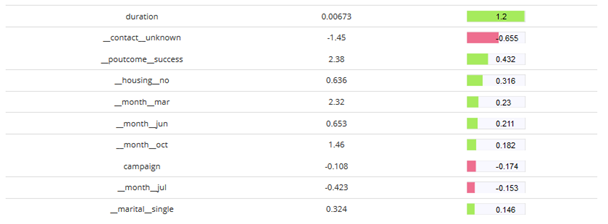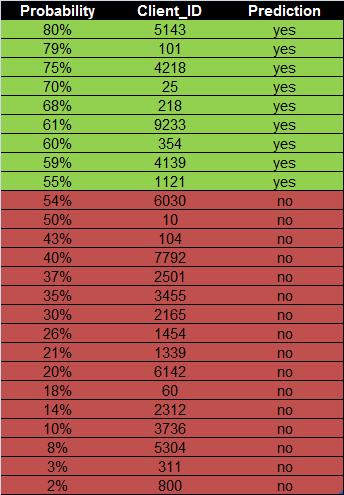
According to Forrester, it costs 5x more to acquire new customers than it does to keep current ones. Another study shows that returning customers spend 30% more than new customers and are more willing to purchase new items from the offer of the vendor.
These statistics clearly show how big the potential of selling products to existing customers is.
In today’s article I’ll show you how to run a successful campaign for this group of customers.
Imagine that you start a promotional campaign. Its goal is to sell one of the products offered by your company. For the purposes of this article, let’s assume that you run an online store and the product will be black boots.

All of them? If your database contains thousands or hundreds of thousands of customers, the cost of such a campaign can be high.
Why sending the campaign to every customer is not worth it? Here are some reasons:
For instance, if you contact your customers via traditional mail, you have to incur the cost of buying stamps, envelopes or printing leaflets, if through a call centre – the cost of consultants making phone calls.
Mismatching the offer with the buying habits can translate into customer’s dissatisfaction and, in the long term, contribute to his/her churn.
Customers being bombarded with ads mismatched to their preferences can, for example, stop reading your e-mails/answering your phone calls, even if another offer will be perfectly matched to their expectations. They’ll just assume that it is spam again.
This list does not include all the reasons. You can go even further, towards a comprehensive view of the strategy of building relationships with customers. A challenge like this is addressed by an approach based on the customer journey widely used by, for example, mobile operators.
However, if you do not have adequate resources to apply them, I suggest starting with a simplified approach:
Now, a more difficult question:
You can rely on your own experience and expertise or decide to use the analytical approach, especially predictive analytics.
An alternative would be to use recommendation algorithms; however, predictive methods enable the use of a wider spectrum of information, meaning that their precision (in the case where such information is available) is greater.
If you’re currently thinking:
“Predictive analytics? Oh, no, no, no. It’s not for me. I’m no expert in Data Mining methods”. I assure you that using predictive analytics tools does not have to be complicated, see for yourself here.
To predict which of the customers will be most interested in the offer, you need data regarding, first of all:
If you do not have data on previous campaigns, we recommend conducting a pilot campaign, the results of which will be the basis for further analysis.
For the purpose of such campaign select a group of customers from your database and divide it into a test group (send them the offer) and a control group (do not take any actions). We will devote a separate article to the topic of how to divide customer base into those two groups.
Save the results of the campaign in a table, e.g. in the “Result” column. Mark a positive response to the campaign with “1” (purchase) and a negative one with “0” (no purchase).

Sample input data for analysis
Knowing which customers bought the product, you can take a closer look at them to see who they are, what their characteristics are. The idea here is to look for other customers in the database who are alike. There is a good chance that they will also be interested in the product.
Do you remember what the goal is? What question do we want to answer? We are looking for customers who are likely to buy those beautiful shoes. As I mentioned, this is a simplified case. Why?
You can approach the problem a bit differently. You can look for customers, in the case of whom the campaign will increase the chance of the purchase. This is due to the simple fact that among your customers there will be those who will buy the selected shoe model anyway and do not need additional incentives, and those who do need such incentives (in the form of marketing communication) to make a purchase.
Divide customers into two groups: the test group (send them the promotional campaign) and the control group (do not send any campaign). Then check in both groups which clients have made a purchase. Your task will be to build two profiles instead of one:
In this case…
Having the data from the pilot campaign, consider the profile of the customer who has purchased the product. Is it a person from a big city, a man or a woman; is it a person who spent more or less than PLN 1000…? Finding factors that influence the purchase is not always easy, especially when you have a lot of data. It is difficult to choose from dozens, hundreds or even thousands of customers’ characteristics and their behaviour those that are crucial in the purchasing process.
And this is where predictive analytics is very useful.
Predictive analytics tools don’t have this problem. They’ll find the profile of the ideal customer and will prioritize potential customers based on their estimated propensity to take advantage of the offer much faster than a person analyzing individual characteristics would.
The result of the analysis will point out the impact the different levels of the given characteristics (e.g. for “age” this could be: 18–29, 30–39, 40–49, 50–64, 65+) have on the likelihood of purchasing a product. Characteristics that are most relevant for the purchase will be selected. For instance, in the case of the analysis presented below, the higher the value of the coefficient calculated for a given level of a characteristic, the greater the likelihood that the customer with this characteristic decides to buy.

Ranking of the levels of characteristics according to the strength of their impact on the predicted phenomenon
Do you want to know which characteristics of your customers will have the greatest impact on the purchase of your product? Sign up for ABM, we’ll show you how to do it in just a few minutes.
Okay, but you need a list of customers to whom you’ll send the campaign to promote the shoes, not the algorithm.
The next step is to score your customers. For this task, you can also use predictive analytics tools. Scoring, in its most popular variant, is the process of calculating likelihood that a given customer will buy a certain product.
Maybe you are already familiar with the concept of scoring; it appears in marketing automation tools. In some of these tools, scoring points are assigned manually, e.g.: a customer spent EUR 100 in your e-shop: assign 5 scoring points, visited the pricing page : assign 2 points, etc. In the case of predictive analytics tools, points are adjusted and calculated for you.
As a result of a scoring process, you may receive, e.g.:

Hypothetical example of the scoring result
One more question remains. How can you tell that the given likelihood of purchase is high? Is probability of 40% high enough to include the customer in the campaign?
The tools for predictive analytics allow for decisions to be optimized by, among others:
On the basis of this information, an optimal cut–off is calculated:
As a result, with the assumed profits and costs, the profit from the campaign is maximized.

Of course, this is a simplified case. We can use this information to create a number of customer segments, e.g. send the campaign to a certain group, not send it to another one, and include the third one in a lead nurturing campaign.
Increasing sales among existing customers is cheaper and more effective than acquiring new customers. But even then it’s not worth relying only on your own hunches and expertise, even when it comes to choosing the target audience for the promotional campaign. How customers decide on purchasing a product, what is important when making a choice, etc. may not be easy to determine, especially when we collect a lot of information about customers and their behaviour. In such cases, it is worth using predictive analytics tools, especially since using them doesn’t have to be complicated. Machines will analyse the collected data and find behavioural patterns faster than people. As a result, we’ll receive a “recipe” for the ideal customer and a list of customers who best fit into this pattern.